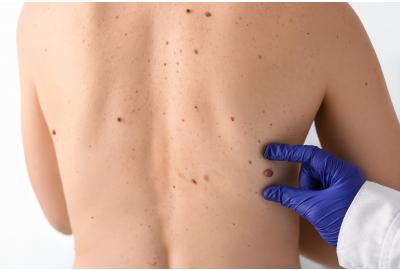Your Guide to Seborrhoeic Keratosis: From Causes to Care
Keratosis refers to a group of skin conditions involving a build-up of the protein keratin. This is the same protein that helps to form your skin, hair, and nails. While they share a name, each type of keratosis has different causes, risks, and treatment needs. In this series, we explore:
Seborrhoeic Keratosis – Benign, “stuck-on” growths that often appear with age.
Keratosis Pilaris – Rough, bumpy skin caused by keratin plugging hair follicles.
Actinic Keratosis – Sun-induced, precancerous patches that need medical attention.
Whether harmless or more serious, recognising the differences can help you decide when to simply monitor a spot — and when to book a dermatology consultation.
Seborrhoeic Keratosis: What You Need to Know About These Common Skin Spots
Ever noticed a "stuck-on" patch of skin that seems to appear out of nowhere? You might be looking at seborrhoeic keratosis.
These harmless growths are surprisingly common, especially as we get older. Understanding what they are, their causes, symptoms and treatment options is essential for maintaining healthy skin.
Causes: Why do they appear?
While the exact cause of seborrhoeic keratosis isn't fully understood, several factors are known to contribute to their development.
Genetics: If your parents or close relatives have seborrhoeic keratosis, you are more likely to develop it.
Intrinsic skin ageing: These growths often increase in appearance on our bodies as we age naturally.
Extrinsic skin ageing (Sun Exposure): Some studies suggest UV exposure, pollution, smoking or other environmental influences.
While these growths are benign, they can sometimes become irritated or cosmetically bothersome leading to a decision to have them removed.
Symptoms: What should I look out for?
Seborrheic keratosis usually has visible symptoms, though it is typically asymptomatic (doesn’t cause pain or discomfort). Common characteristics include:
Appearance: They often look like slightly raised, waxy, or “stuck-on” spots on the skin. Colours can range from light tan to dark brown or black.
Texture: The surface can be rough, scaly, or wart-like. Some may have a smooth, shiny texture.
Size and Shape: They vary in size, from a few millimeters to several centimeters, and are usually round or oval.
Number: They can appear as a single lesion or multiple growths, often increasing in number with age.
Itchiness or Irritation: Most are painless, but they can occasionally become itchy or irritated, especially if rubbed by clothing or scratched.
Slow Growth: They typically grow slowly over months or years.
Treatment options
There are several treatment options available for the removal of Seborrhoeic Keratosis lesions. These include cryotherapy, excision, electrodessication, topical gels, creams, laser therapy, and topical hydrogen peroxide solution (Gündüz & Türsen, 2023). Some of the methods used by our GPs are as follows:
Cryotherapy: The use of liquid nitrogen or CO₂ to freeze the lesion.
Shave excisions: The doctor shaves off the lesion with a small blade
Electrodessiccation (with or without curettage): Using electric current to remove the lesion.
Where can I get treatment?
[Seborrhoeic Keratosis Removal]- At Letsbuyhealthcare, we offer treatment of Seborrhoeic Keratosis in Dublin, Kerry, Kilkenny, Meath and Wicklow.
Whether it’s seborrhoeic keratosis or another skin concern, knowing your options empowers you to make the best decisions. If you notice any new or changing skin spots, lumps or bumps, don't wait. Book a dermatology consultation today.
[Dermatology Consultations] – Notice a new or changing spot? Get expert advice and peace of mind.
[Dermatology Consultations guide]- If you want to learn more about skin health and when to seek professional advice, check out our guide.
Letsbuyhealthcare
-Your Health, Your Money, Your Choice-
Griffiths, C., Barker, J., Bleiker, T., Chalmers, R. & Creamer, D. (eds.) (2016) Rook’s Textbook of Dermatology. 9th edn. Chichester: Wiley Blackwell.
Gündüz, E. & Türsen, Ü. (2023) ‘Seborrheic keratosis’, in Katsambas, A.D. & Zouboulis, A. (eds.) European Handbook of Dermatological Treatments. 4th edn. Cham: Springer International Publishing, pp. 913–917.
Wollina, U. (2019) ‘Recent advances in managing and understanding seborrheic keratosis’, F1000Research, 8, p. 1520. Available at: https://doi.org/10.12688/f1000research.18983.1 (Accessed: 16 August 2025).












